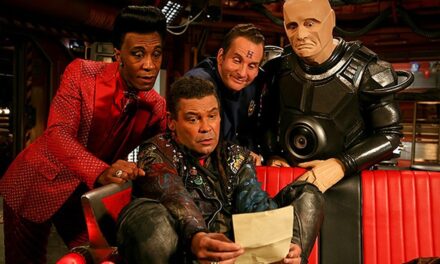Close Encounters of the Third Kind is a science fiction film directed by Steven Spielberg and released in 1977. The movie falls under the genres of science fiction and drama and was released during a time when the genre was gaining popularity and recognition in mainstream cinema. The film explores themes of human connection, wonder, and the unknown.
Directed by Steven Spielberg, who is known for his work on iconic films such as Jaws and E.T. the Extra-Terrestrial, “Close Encounters of the Third Kind” was written by Spielberg himself along with Hal Barwood and Matthew Robbins. The film was produced by Columbia Pictures and EMI Films.
The film’s plot revolves around Roy Neary, a working-class electrical lineman, played by Richard Dreyfuss. After an encounter with an unidentified flying object (UFO), Roy becomes increasingly obsessed with visions of a mysterious mountain and a strange tune. His obsession leads him to connect with other individuals who have experienced similar encounters, including Jillian Guiler, played by Melinda Dillon. Together, they follow the signs and symbols left by the UFOs, leading them to a life-changing encounter.
In addition to Richard Dreyfuss and Melinda Dillon, the film also features Teri Garr as Roy’s wife, Ronnie, and François Truffaut as Claude Lacombe, a French scientist leading the investigation into the UFO phenomenon. The cast also includes a mix of child actors and supporting roles played by Bob Balaban, Cary Guffey, and J. Patrick McNamara.
Upon its release, “Close Encounters of the Third Kind” received positive reviews from critics and audiences alike. Its awe-inspiring visuals, groundbreaking special effects, and Spielberg’s masterful storytelling were praised. The film also achieved significant success at the box office, becoming one of the highest-grossing films of that year.
The movie was recognized with several notable achievements. It received eight Academy Award nominations, including Best Director and Best Cinematography, and went on to win in the categories of Best Cinematography and Best Sound. The film’s enduring impact on popular culture is also evident through its memorable musical score composed by John Williams, which has become iconic in its own right.
“Close Encounters of the Third Kind” left a lasting legacy in the world of cinema. It showcased Spielberg’s storytelling ability and visual prowess, solidifying his position as one of the most influential directors of his time. The movie’s success further popularized the science fiction genre and inspired countless filmmakers for years to come.
While there have been no direct sequels or prequels to “Close Encounters of the Third Kind,” the film’s legacy lives on through its influence on subsequent science fiction movies. Its themes of extraterrestrial encounters and humanity’s fascination with the unknown continue to inspire filmmakers and captivate audiences to this day.













